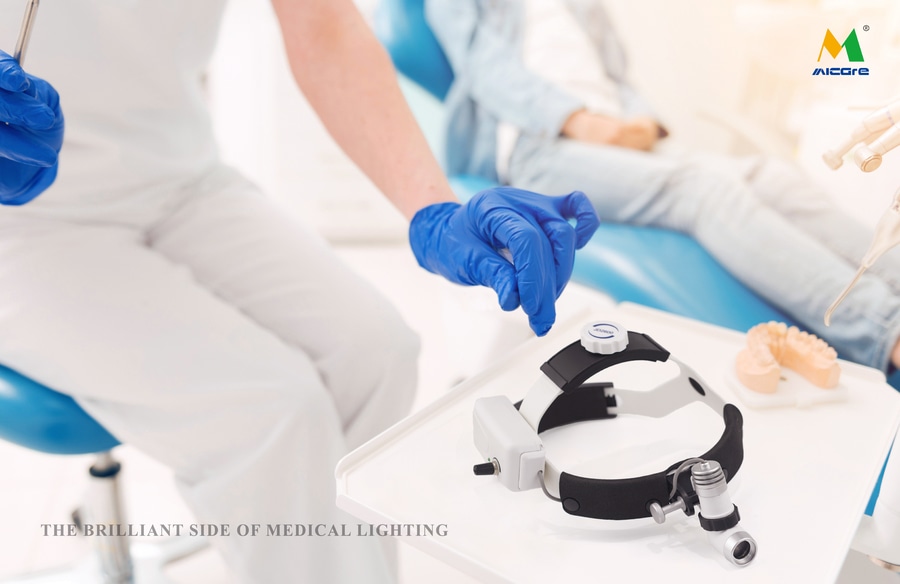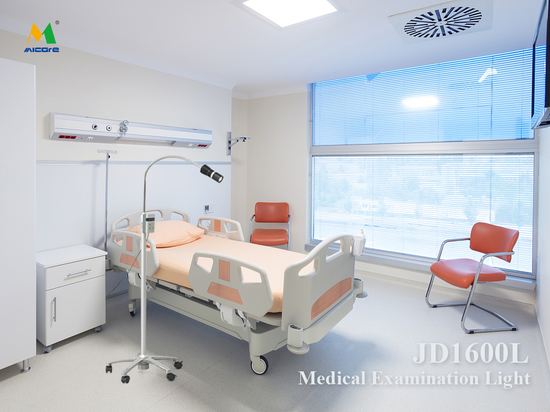
#Product Trends
Surgical headlamp: the "pillar of light" on the operating table
medical headlight
The surgical headlamp operates on an innovative concentrator design, featuring a light source, reflection system, and conditioning mechanism. Compared to traditional light sources, LEDs offer high brightness, low power consumption, long lifespan, and excellent color reproduction. This allows for illumination that closely resembles natural light during surgery, enabling doctors to accurately distinguish the colors and conditions of tissues and blood vessels. The reflection system serves as the "commander" of light by utilizing specially designed mirrors and lenses to efficiently concentrate and evenly distribute the LED-emitted light. For instance, a glass lens focuses the light onto a precisely fitted support arm that directs it exactly where needed by the surgeon, ensuring broad and uniform illumination. The adjustment mechanism provides flexibility in positioning. With movable arms and joints, doctors can easily modify the lamp head's position and angle while also adjusting light intensity according to different stages of surgery—ranging from delicate eye procedures to complex abdominal operations—ensuring optimal lighting for each task.
Key Technical Highlights
1. Superior advantages of LED light sources: In addition to the advantages mentioned above, LED light sources can also start quickly without warm-up time, which is crucial in the race against the clock. Moreover, its energy consumption is significantly lower than that of traditional halogen lamps, which not only saves the hospital electricity costs, but also reduces the potential risk of heat generation, reducing the heat load in the surgical environment, and allowing both doctors and patients to be in a more comfortable environment.
2.The subtlety of optical design: In terms of optical design, the surgical headlamp adopts a convex lens principle similar to that of the sun to achieve the convergence and uniform divergence of light. Some high-end surgical headlamps also use aspherical lens technology, which effectively eliminates light distortion and provides clearer, unbiased illumination. At the same time, by optimizing the angle of the lens and the diameter of the illumination, the surgeon's field of view is expanded. It allows the doctor to observe the surgical site more comprehensively during the operation, without missing any subtleties.
Main application areas
Hospitals: The main force of demand: As the main place of surgery, hospitals have a huge and demanding demand for surgical headlamps. The various surgical departments of the general hospital, such as general surgery, orthopedics, neurosurgery, etc., are inseparable from the support of surgical headlights.
Clinics: Flexible and convenient needs: Although the scale and number of surgeries in small clinics are relatively small, the demand for surgical headlamps cannot be ignored. Due to the limited space and budget of the clinic, they prefer to choose surgical headlamps that are small, portable and relatively affordable.
Other medical scenarios: In addition to hospitals and clinics, surgical headlamps also play an important role in some emergency sites, mobile medical vehicles, and medical points in remote areas. For example, traffic accident rescue, field rescue, etc., the portability and high brightness of surgical headlamps are very important, which can help medical staff quickly carry out surgical treatment in emergency situations.





